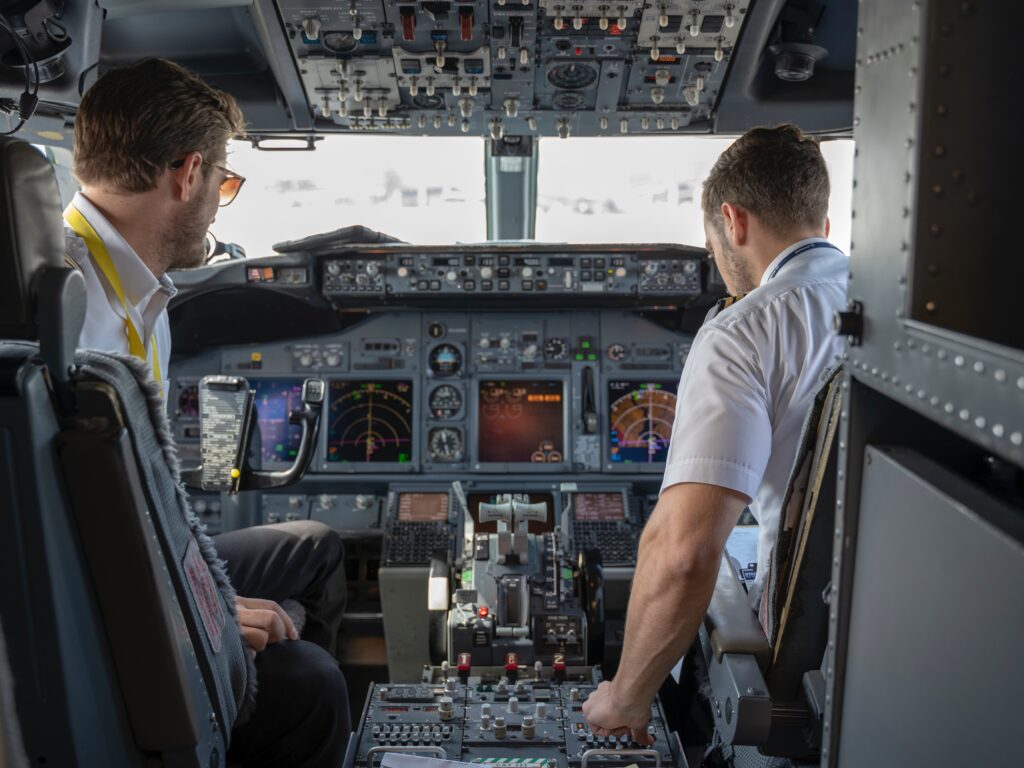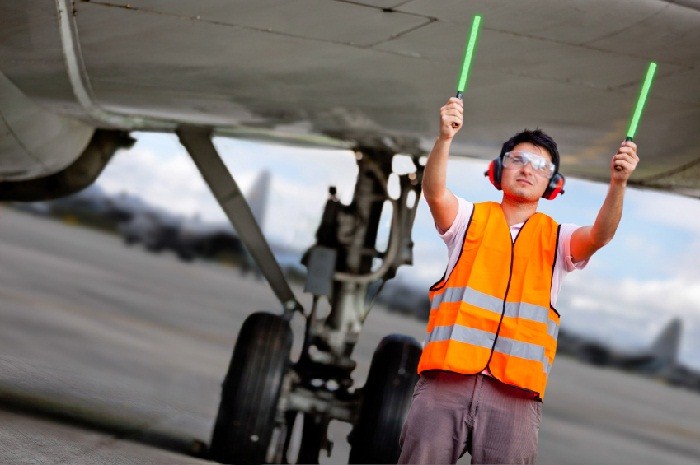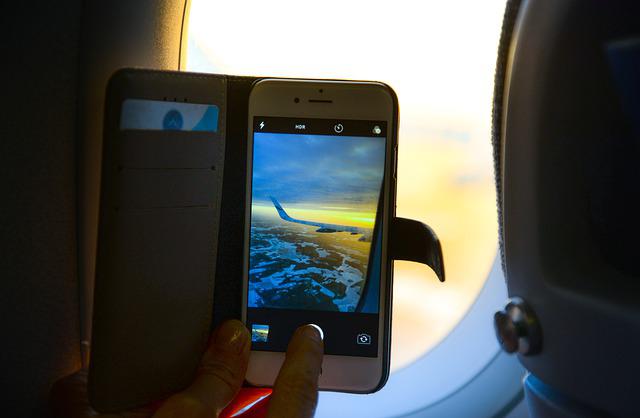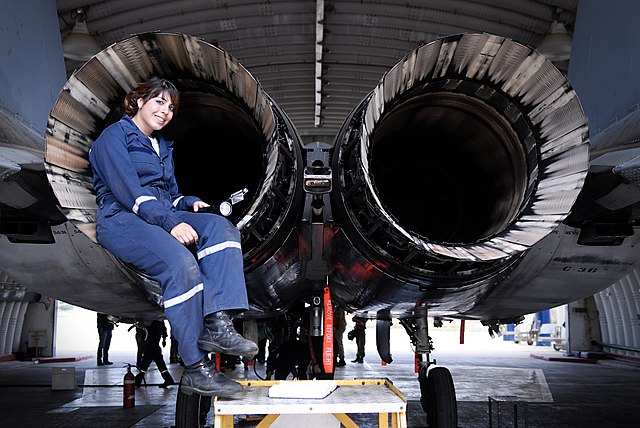Do you use just eLearning? And are you wondering why your staff are not absorbing the material you give them? or applying it to their day jobs?
And the classroom option just isn’t practical. You need Blended Learning.
And we know how you can do it. IATA already figured it out. It’s called CBTA, or Competency-based Training Assessment. It’s been developed from lessons learned in Pilot Training and we are using it to supercharge education.

Classroom
Most of us seek that silver bullet. 20 years ago, it was eLearning, back then it was the PowerPoint slide on an LMS with narration. 10 years ago, it was Virtual Reality (or Augmented Reality).
At each MRO conference (or WATS) you would see a dozen new education companies who swore all your education would be done on the oculus rift. They’re still saying it.
We have another answer. The answer is Blended Learning. And your assignment is to agree or disagree. Our solution is evidence-based and below we will link to some academic papers you can download that gives you a more comprehensive pathway to delivering blended learning.
A thesis of sorts, this one is. Yoda might have said. And yes, I’ll throw in the odd joke to make sure you are paying attention, but if you’re struggling with recurrent training activities, it’ll breeze by like an episode of Bridgerton.
Competency Based Learning
Classroom time. For our learning thesis to hold water, we must teach you fine people what’s at the core of the Blend. Way back in 2006, ICAO introduced the Procedures for Air Navigation Services – Training or PANS-TRG Doc 9868. You can find it HERE.

This was the first step in the platform we call competency-based training assessment. And to this day it is used for Pilot Training, Medical Examiners, and technicians. But it started with the pilots. You see Pilot training, sometimes, can be straight forward.
They take off on a lesson where the instructor has a sheet of paper with a list of things that he wants to assess the trainee pilot on. Competencies. They do the same thing on simulators.
Blended Learning Program
The instructor will start on item 1 and ask the pilot to execute a maneuver. Which hopefully he does successfully. If so, the instructor will tick that box beside that element as being executed. The pilot has shown competency.
They continue this learning path until the instructor is satisfied that the pilot has exhibited all competencies as designed by the test designer and the instructors’ instructions. Pretty simple huh? Just to underline this point, a trainee pilot would be aware of these competencies. He will have studied them already. And practiced them in advance of the examination.
The Teaching Steps
Here is the structure of that Pilot CBTA blended learning model.
- Step 1 Define the training program – what do you want to teach?
- Step 2 Design the instructor competencies – Are they competent to assess?
- Step 2 Deliver the test instructions to the trainee – What will he study and practice?
- Step 3 Deliver the assessment – Does he/she/they show competency?
- Step 4 Evaluate both Trainee and Training program for effectiveness – Is your training effective?
Blended Courses
The key here is Step 4. But not the study or the Learning – The observation that the learning and studying has worked. We say again, what we want is proof, evidence, that the training we have designed has been effective. And there is only one sole source of this evidence. Trainee actions.

How? There are four factors at play here that are critical to the level of proficiency a trainee should show.
- Knowledge – have they learned what you asked?
- Skills – have they practiced the skills to execute what you have asked?
- Attitude – The key differentiator. What was their overall approach to the task?
- Experience – You thought all these trainees were young people coming up? Shame on you. Experience has a direct effect on competency and that’s why CBTA is the best way under continuous training and recurrent training.
Educational Technology
Blended learning is a blend, or mixture, of instruction where the evaluation methods allow the instructor to see the competencies in real time and across various stages. So, we have a mix of instructor led traditional classroom, self-study, group work/projects and simulations (or on the job).
The blend forces the trainee to not only study and synthesis the material, but they must act in accordance with it in the real world. In movies (good movies), the climax comes with the hero acting in accordance with his true self when he has learned the lesson of the theme. It is the Hegelian dialectic.
In Toys, Woody selflessly makes sure that Buzz gets back to Andy because he knows that’s what’s right even though it’s not what he wants. We want trainees to display competency after they have absorbed the material (or skill) so we know they will execute that skill in the real world. Whether that’s’ fly a plane, fixing a jet engine, or performing a security check.
The Benefits of Blended Learning
No company can afford to have all or most of their staff on training at the same time. Blending allows you to deliver material to students to self-learn and then instructor assess one-on-one. This solves the staff rotation problem and staff turnover. Pilot training does this. The Hybrid learning blend can include some or all these elements.
- Authentic real-world cases or scenarios.
- Simulations or gaming.
- Team collaboration.
- Problem-based learning experiences.
Coaching/Mentoring.
Blended Learning is Education
Like we said at the start, there is no silver bullet. The blended learning method is that you should have on-the-job or work-related experience and be able to complete trainee learning around that. But at the bottom of the pile are books, lectures, or digital learning.
Anywhere the trainee is only sitting down listening or reading you are dead in the water. The material must be delivered in a way that relates to problems being solved or tasks being completed in the real world. In aviation we face a lot of challenges and risks. We love work and so we pay attention, but we don’t pay attention all the time. Class time should always relate to practical challenges.
Training
And a lot depends on the way the material is delivered to us. During the Covid lockdown Universities found this out. We know because some of us deliver odd lectures to students and over the past year we had to move lectures online. But initially it wasn’t effective.
We needed to get the students to interact with the learning material but also with each other. And we needed to observe this learning so we could see these competencies. When you apply critical thinking or you synthesize a subject, then and only then can you move to that higher level of proficiency.

Learning Times
When a pilot learns about the Dutch roll effect, he has not clue what it feels like. The same goes for the upset recovery task. You need to be put in that position so that your whole body gets feedback. Anyone who has been in a car accident knows what I mean.
If it happens to you and you are driving, your attitude to the road is forever changed. As a young aircraft mechanic, I was made to go on a human factor management systems training course by an ex-Lufthansa engineer. He took off his jacket and we saw he had only one arm.
He had lost it in an accident at work. You can bet your bottom dollar I listened to that man speak. Be warned, blended learning is the gateway drug for good person instruction. And it is. Use it as your starting point to develop the right learning style.
You can use fancy Learning management systems, or VR and online technologies. But these alone will not solve your problem. Write down the competencies. Get a good instructor and continually assess your blended learning environment.



